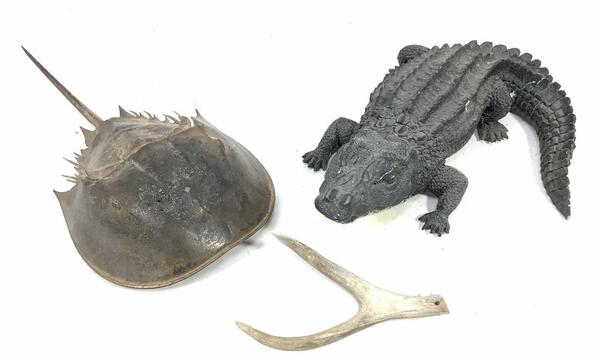When we think about prehistoric animals, visions of mighty dinosaurs often come to mind. But did you know that many modern animals have roots that stretch back to the time of these ancient creatures? Let’s embark on a fun and fascinating journey as we explore ten animals that can trace their lineage back to prehistoric times. Buckle up; it's going to be an exciting ride!

First up, the horseshoe crab! These fascinating creatures have been roaming the Earth for over 450 million years, predating even the dinosaurs. With their hard shells and unique blue blood, they’ve survived countless mass extinctions. Talk about resilience!
Crocodiles are often called “living fossils” for a reason. They’ve existed for around 200 million years, evolving little over that time. These formidable reptiles are closely related to dinosaurs, making them one of the closest links to our prehistoric past. So, next time you see one basking in the sun, remember it’s practically an ancient relic!
Sharks are the ultimate survivors, with a history that spans more than 400 million years. Some species, like the Greenland shark, have been swimming through the oceans since before the dinosaurs. With their streamlined bodies and powerful jaws, sharks continue to thrive in our waters, reminding us of their ancient origins.
Believe it or not, jellyfish have been around for more than 500 million years! These mesmerizing creatures are some of the oldest living organisms on Earth. With their gelatinous bodies and ethereal beauty, jellyfish drift through oceans, reminding us of a time long gone.
The coelacanth is often referred to as a “living fossil.” This ancient fish was thought to have gone extinct around 66 million years ago, only to be rediscovered in the 1930s off the coast of South Africa. With its unique lobed fins, the coelacanth provides a fascinating glimpse into the past.
Meet the tuatara, a reptile native to New Zealand. Often mistaken for a lizard, this unique creature is more closely related to dinosaurs and has existed for about 200 million years. With a third eye on top of its head and a distinctive spiny crest, the tuatara is a true prehistoric survivor.
Ostriches may not look like your typical prehistoric animal, but they are part of a group called ratites, which includes emus and kiwis. These flightless birds can trace their lineage back to the time of the dinosaurs. Their ancestors roamed the Earth when large reptiles dominated the landscape.
Like their crocodile cousins, alligators have been around for millions of years. They share a common ancestor with dinosaurs and are well-adapted to their environments. With their powerful jaws and armored bodies, alligators are true survivors, bridging the gap between the ancient and modern world.
Ants are tiny but mighty, and they have a long history that dates back to around 100 million years ago. These social insects have adapted to various environments and can be found almost everywhere on Earth. From the dinosaur age to today, ants have thrived and evolved, proving their resilience.
Horses, though domesticated and vastly different from their ancient ancestors, have roots that go back millions of years. Early horse-like creatures roamed the Earth during the Eocene epoch, about 55 million years ago. Today’s horses are a far cry from their prehistoric relatives, but they still carry a piece of that ancient legacy.
It’s incredible to think that many animals we see today are direct descendants of creatures that walked the Earth millions of years ago. From the mighty horseshoe crab to the charming tuatara, these animals remind us of the rich tapestry of life that has evolved over eons. So, the next time you encounter one of these fascinating creatures, take a moment to appreciate their prehistoric roots and the amazing journey they’ve taken through time!
animal tags: Prehistoric
We created this article in conjunction with AI technology, then made sure it was fact-checked and edited by a Animals Top editor.